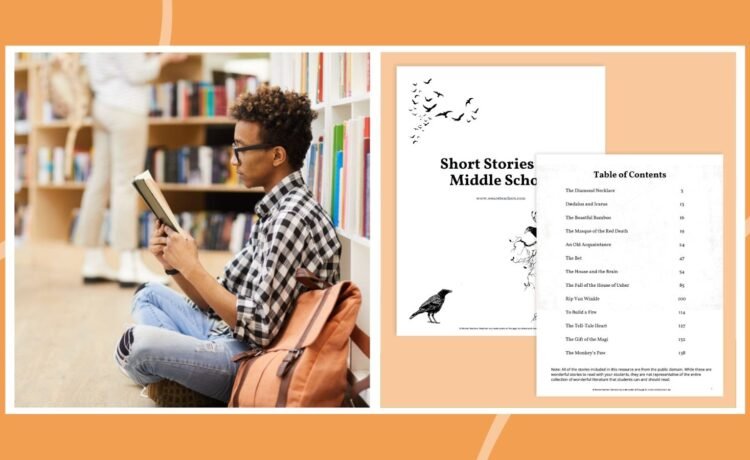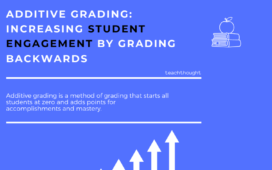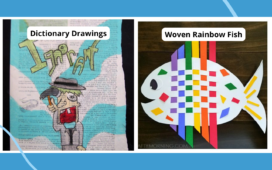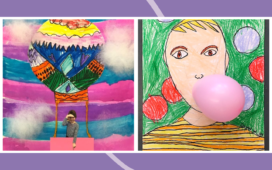Short stories are a perfect teaching tool for middle schoolers. They’re quick, fast-paced, and pack a punch with lots of action and drama. And because they require less time to read, they’re an easy way to expose your students to new authors and genres.
This list of short stories is great for teaching middle schoolers. Links to each story are included below (they are sometimes scanned reproductions). Always remember to check in advance for typos, and be sure to respect copyright protections. Finally, before you bring these short stories for middle schoolers to your classroom, make sure the material (and whatever twist ending is in store) is previewed and appropriate.
You can get free printable copies of the short stories by simply filling out the form on this page.
1. Recitatif by Toni Morrison
“The minute I walked in and the Big Bozo introduced us, I got sick to my stomach. It was one thing to be taken out of your own bed early in the morning—it was something else to be stuck in a strange place with a girl from a whole other race.”
Why we love it: Morrison’s stated goal in this short story, which begins in an orphanage, was to remove “all racial codes from a narrative about two characters of different races for whom racial identity is crucial.” Also, it’s perfect for studying style and spurring conversation.
2. Stone Animals by Kelly Link
“Carleton was serious about how he played. Tilly sat on the landing, reading a book, legs poking out through the railings. Whenever Carleton ran past, he thumped her on the head, but Tilly never said a word. Carleton would be sorry later, and never even know why.”
Why we love it: It’s a longer short story that is rich with stylistic and narrative elements and can serve as a novella. So, save time to teach this short story over a few weeks.
3. Hearts and Hands by O. Henry
“Among the newcomers were two young men, one of handsome presence with a bold, frank countenance and manner; the other a ruffled, glum-faced person, heavily built and roughly dressed. The two were handcuffed together.”
Why we love it: Middle school readers are often ready for the classics, and even though O. Henry’s language can be tough for kids today, “Hearts and Hands” is quick and clear and hits exactly as you want his stories to hit.
4. The Fir Tree by Hans Christian Andersen
“And the Wind kissed the Tree, and the Dew wept tears over him; but the Fir understood it not.”
Why we love it: It’s a poetic fairy tale, and it’s great for teaching theme. Use this story to teach literary elements and figurative language.
5. The Diamond Necklace by Guy de Maupassant
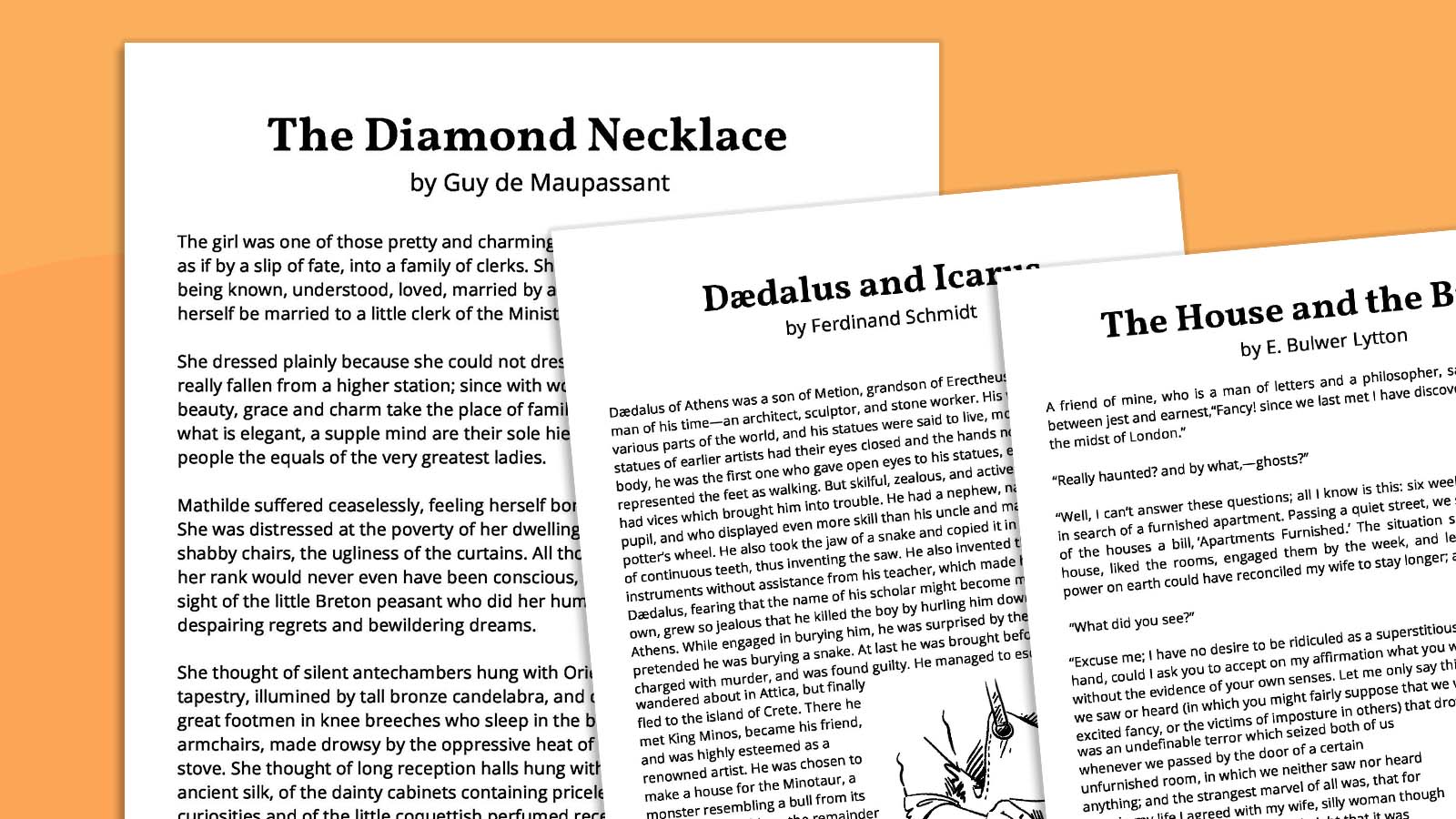
“The sight of the little Breton peasant who did her humble housework aroused in her despairing regrets and bewildering dreams.”
Why we love it: “The Diamond Necklace” is a great story to use to teach character development. Scaffold this older text for students by providing supports for background knowledge and vocabulary.
6. The Story of an Hour by Kate Chopin
“Knowing that Mrs. Mallard was afflicted with a heart trouble, great care was taken to break to her as gently as possible the news of her husband’s death.”
Why we love it: It’s a perfect anchor text for a discussion assignment.
7. The Library of Babel Jorge Luis Borges
“Like all men of the Library, I have traveled in my youth; I have wandered in search of a book, perhaps the catalogue of catalogues; now that my eyes can hardly decipher what I write, I am preparing to die just a few leagues from the hexagon in which I was born.”
Why we love it: Welcome to Borges’ world of magical realism. Read this story as an example of magical realism, or as part of a unit about authors whose work bent reality in all kinds of ways.
8. The Circuit by Francisco Jiménez
Why we love it: We enjoy doing this as a read-aloud, to lead into reflective writing or discussion.
9. Daedalus and Icarus by Ferdinand Scmidt
“Daedalus of Athens was a son of Metion, grandson of Erectheus. He was the most skillful man of his time–an architect, sculptor, and stone worker. … But skillful, zealous, and active as he was in his work, he had vices which brought him into trouble.”
Why we love it: “Daedalus and Icarus” is a great way to introduce middle schoolers to mythology. It’s a simple enough story, but with enough complexity to strengthen students’ ability to focus and read line-by-line to fully grasp the story about the dangers of being overconfident.
10. The Paper Menagerie by Ken Liu
“I didn’t know this at the time, but Mom’s breath was special. She breathed into her paper animals so that they shared her breath, and thus moved with her life. This was her magic.”
Why we love it: Liu writes a subtle story, which makes it exciting for students to uncover elements of craft. Use this story as a practice in close reading and assign students to small groups to read aloud and talk about how the story unfolds.
11. The Boastful Bamboo from Japanese Folk Stories and Fairy Tales
“Beneath the gleaming snows of Fuji lay a great forest. There many giant trees grew, the fir, the pine, the graceful bamboo, and the camellia trees. The balmy azaleas and the crinkled iris bloomed in the shade. The blue heavens were fleecy with snowy clouds, and gentle zephyrs caressed the blossoms and made them bow like worshipers before a shrine.”
Why we love it: This story injects Japanese folktales into the curriculum so students can learn more about Japan, and see how storytelling and fairy-tale elements are similar and different across cultures.
12. The Open Window by Saki (H.H. Munro)
“Framton shivered slightly and turned towards the niece with a look intended to convey sympathetic comprehension. The child was staring out through the open window with dazed horror in her eyes.”
Why we love it: It’s a story that’s great to read anytime for setting, theme, and characterization, or a wonderful themed story for a Halloween read-aloud.
13. The Masque of the Red Death by Edgar Allan Poe
“When the eyes of the Prince Prospero fell upon this spectral image (which, with a slow and solemn movement, as if more fully to sustain its role, stalked to and fro among the waltzers), he was seen to be convulsed.”
Why we love it: Poe should be on every middle school reading list. In this story, Death is a character and Poe creates a fantastic personification of Death with his descriptive writing.
Learn more: 25 Edgar Allan Poe Poems
14. The Ransom of Red Chief by O. Henry
“We chose for our victim the only child of an influential citizen named Ebenezer Dorset. … The kid was a boy of ten, with bas-relief freckles, and hair the colour of the cover of the magazine you buy at the new-stand. … Bill and me figured that Ebenezer would melt down for a ransom of two thousand dollars to a cent. But wait till I tell you.”
Why we love it: This story is Home Alone but set in the Old West and written by O. Henry. Help students appreciate how even older stories can be hilarious.
15. An Old Acquaintance by Leo Tolstoy
“The infantry picket, stationed on the knoll at the left, stood in perfect silhouette against the light of the sunset; no less distinct were the stacks of muskets, the form of the sentry, the groups of soldiers, and the smoke of the smouldering camp-fire.”
Why we love it: This story is a great chance to talk about how authors bring their own experiences (in this case, historical events) into their work.
16. Fixed Income by Sherman Alexie
Why we love it: Filled with Alexie’s trademark style, it’s a quick look at the generation gap and perfect for a read-aloud or studying characterization. Like his other story on this list, the text we chose is edited to be more school-appropriate.
17. The Wife’s Story by Ursula K. Le Guin
“It was the moon, that’s what they say. It’s the moon’s fault, and the blood. It was in his father’s blood. I never knew his father, and now I wonder what became of him.”
Why we love it: Students savor the slow realization that the people in the story might not be exactly what they seem.
18. First-Day Fly by Jason Reynolds
“How were you supposed to know geometry is apparently more important than your drip? How were you supposed to hear anything Mrs. Montgomery had to say about triangles and diameters and whatever a hypotenuse is when your sneakers are practically bleeding to death?”
Why we love it: In this story, the narrator reflects on his younger self as he prepares to go to school. It’s an adventurous reflection, rich with details and style, just what you’d expect from Jason Reynolds.
19. On the Sidewalk Bleeding by Evan Hunter
“He lay on the sidewalk, bleeding, and he thought only: That was a fierce rumble. They got me good that time, but he did not know he was dying.”
Why we love it: We learn how it ends right in the beginning. This piques students’ curiosity so they continue to read to find out how the character got here. A good example of an intriguing story structure.
20. The Bet by Anton Chekhov
“Execution kills instantly, life-imprisonment kills by degrees. Who is the more humane executioner, one who kills you in a few seconds or one who draws the life out of you incessantly, for years?”
Why we love it: You can’t read short stories without including Chekhov. “The Bet” raises ethical questions for the reader in the way that all great Russian literature does.
21. My Favorite Chaperone by Jean Davies Okimoto
“It’s like that in America. It’s a place where things can change for people, and many people always seem to have hope. At least that’s how it seems to me. Maybe I was beginning to think this way, too, although my hope was very small.”
Why we love it: This story about immigration is long enough for a mini-unit, and it’s great for teaching the basics of storytelling and style. It’s also a great story for helping students think about the immigration experience.
22. The Treasure of Lemon Brown by Walter Dean Myers
Why we love it: Walter Dean Myers’ universe is immediately accessible for many middle school kids, and this story gives us a chance to expand the unit into a study of the blues and all the musical genres it inspired. The project possibilities are endless!
23. The House and the Brain by E. Bulwer Lytton
“A friend of mine, who is a man of letters and a philosopher, said to me one day, as if between jest and earnest, ‘Fancy! Since we last met I have discovered a haunted house in the midst of London.’”
Why we love it: The first line of this story brings us to a haunted house, and students are hooked!
24. Seventh Grade by Gary Soto
“On the way to his homeroom, Victor tried a scowl. He felt foolish, until out of the corner of his eye he saw a girl looking at him. Umm, he thought, maybe it does work. He scowled with greater conviction.”
Why we love it: This story captures the middle school experience so well, and Soto always does such a great job integrating diverse voices into his work.
25. Flowers for Algernon by Daniel Keyes
“Then I said if I had my glases I coud see better I usally only ware my glases in the movies or TV but I said they are in the closit in the hall. I got them. Then I said let me see that card agen I bet Ill find it now.”
Why we love it: The story of an intellectually disabled man who is temporarily able to blend into “normal” society brings out great questions, even for today’s students.
26. The Fall of the House of Usher by Edgar Allan Poe
“During the whole of a dull, dark, and soundless day in the autumn of the year, when the clouds hung oppressively low in the heavens, I had been passing alone, on horseback, through a singularly dreary tract of country; and at length found myself, as the shades of the evening drew on, within view of the melancholy House of Usher.”
Why we love it: No one paints a dreary, spooky picture like Poe. Read this story to analyze how Poe creates mood one dreary word at a time.
27. Everyday Use by Alice Walker
“In real life I am a large, big-boned woman with rough, man-working hands. In the winter I wear flannel nightgowns to bed and overalls during the day. I can kill and clean a hog as mercilessly as a man.”
Why we love it: Walker’s story is a great model about how authors create descriptive characterizations.
28. Lamb to the Slaughter by Roald Dahl
“The room was warm and clean, the curtains drawn, the two table lamps alight—hers and the one by the empty chair opposite. On the sideboard behind her, two tall glasses, soda water, whiskey. … Mary Maloney was waiting for her husband to come home from work.”
Why we love it: Students already know Dahl from his whimsical (if slightly dark) novels like Matilda and Charlie and the Chocolate Factory, but this short story will show students another side of the author. Talk about the story and how versatile an author can be.
29. One Friday Morning by Langston Hughes
Why we love it: Hughes tackles race and discrimination in a story about a community that reverses a decision to award a local teen a scholarship when they learn that she is Black. It’s a compelling and troubling story that ends with a note of inspiration and is rich for discussion.
30. A Very Old Man With Enormous Wings by Gabriel García Márquez
“The light was so weak at noon that when Pelayo was coming back to the house after throwing away the crabs, it was hard for him to see what it was that was moving and groaning in the rear of the courtyard. He had to go very close to see that it was an old man, a very old man, lying face down in the mud, who, in spite of his tremendous efforts, couldn’t get up, impeded by his enormous wings.”
Why we love it: Exploring Márquez’s magical realism is an exciting, eye-opening experience for students.
31. Charles by Shirley Jackson
“‘Why did Charles hit the teacher?’ I asked quickly. ‘Because she tried to make him color with red crayons,’ Laurie said. ‘Charles wanted to color with green crayons so he hit the teacher and she spanked him and said nobody play with Charles but everybody did.’”
Why we love it: Jackson’s must-read story validates the experience of students who don’t play by the rules, and it’s still got the perfect twist ending. Students will remember this story long after you’ve finished teaching it.
32. Rip Van Winkle by Washington Irving
“Every change of season, every change of weather, indeed, every hour of the day, produces some change in the magical hues and shapes of these mountains, and they are regarded by all the good wives, far and near, as perfect barometers.”
Why we love it: It’s important for students to know the reference behind Rip Van Winkle. They can discuss how references from literature make it into everyday language. Plus, this is an imaginative story with great description.
33. Click Clack the Rattlebag by Neil Gaiman
“We walked along the upper corridor in the shadows, walking from patch of moonlight to patch of moonlight. It really was a big house. I wished I had a flashlight.”
Why we love it: Students simply love this story. Period. Gaiman knows how to write for today’s kids, and this story never fails to hold their attention from the drop.
34. Names/Nombres by Julia Alvarez
“At the hotel my mother was Missus Alburest, and I was little girl, as in, ‘Hey, little girl, stop riding the elevator up and down. It’s not a toy.’”
Why we love it: This is less a short story than an anecdotal essay about the words we use to identify one another, especially our loved ones. It’s one of those short stories for middle schoolers that’s perfect for starting the school year.
35. To Build a Fire by Jack London
“The man flung a look back along the way he had come. The Yukon lay a mile wide and hidden under three feet of ice. On top of this ice were as many feet of snow. It was all pure white, rolling in gentle undulations where the ice-jams of the freeze-up had formed.”
Why we love it: London’s stories remain engaging. In this story, the pace is perfect for studying plot, and the style is a fun model for narratives.
36. The Fly by Katherine Mansfield
“The door shut, the firm heavy steps recrossed the bright carpet, the fat body plumped down in the spring chair, and leaning forward, the boss covered his face with his hands. He wanted, he intended, he had arranged to weep …”
Why we love it: “The Fly” is a riddle wrapped in a short story. It’s fun for students to untangle the story and meaning.
37. Geraldo No Last Name by Sandra Cisneros
“She met him at a dance. Pretty too, and young. Said he worked in a restaurant, but she can’t remember which one. Geraldo.”
Why we love it: This story is a great model to show students how authors use words both economically and effectively.
38. Rules of the Game by Amy Tan
“I was six when my mother taught me the art of invisible strength. It was a strategy for winning arguments, respect from others, and eventually, though neither of us knew it at the time, chess games.”
Why we love it: Tan uses the game of chess and the game of life. The themes of passion, dedication, and respect for family and tradition are built into this story, as in much of Tan’s work.
39. Liars Don’t Qualify by Junius Edwards
“Will Harris sat on the bench in the waiting room for another hour. His pride was not the only thing that hurt. He wanted them to call him in and get him registered so he could get out of there.”
Why we love it: It’s a small story about a very big issue, and it’s driven by compelling dialogue.
40. The Sniper by Liam O’Flaherty
“On a rooftop near O’Connell Bridge, a Republican sniper lay watching. Beside him lay his rifle and over his shoulders was slung a pair of field glasses. His face was the face of a student, thin and ascetic, but his eyes had the cold gleam of the fanatic.”
Why we love it: The video game generation connects quickly to the setting, and the moral questions are worth talking about.
41. Civil Peace by Chinua Achebe
Why we love it: This modern Nigerian story is a great way to introduce students to African literature, modern events, and point of view and theme.
42. The Friday Everything Changed by Anne Hart
“Tradition. In Miss Ralston’s class the boys have always carried the water bucket. Until one day, the girls decide it’s time to challenge the rule.”
Why we love it: What better way to empower young world-changers than a short story for middle schoolers about gender roles?
43. The Scholarship Jacket by Marta Salinas
“The next day when the principal called me into his office I knew what it would be about. He looked uncomfortable and unhappy. I decided I wasn’t going to make it any easier for him, so I looked him straight in the eye. He looked away and fidgeted with the papers on his desk.”
Why we love it The limited first-person perspective of the young narrator provides an interesting window on racial and social politics.
44. Amigo Brothers by Piri Thomas
Why we love it: It works as a great extension text if you’re examining sports fiction, friendship stories, ethical questions, or characterization.
45. And of Clay Are We Created by Isabel Allende
“In that vast cemetery where the odor of death was already attracting vultures from far away, and where the weeping of orphans and wails of the injured filled the air, the little girl obstinately clinging to life became the symbol of the tragedy.”
Why we love it: Allende does historical fiction like no other. Introduce students to her style, including the bold imagery and vivid voice with this story about the aftermath of a fictional volcano eruption (based on the 1985 volcano eruption in Colombia).
46. Hills Like White Elephants by Ernest Hemingway
“It was very hot and the express from Barcelona would come in forty minutes. It stopped at this junction for two minutes and went on to Madrid.”
Why we love it: Students can analyze craft, bias, and character development all in one story.
47. The Veldt by Ray Bradbury
“They walked down the hall of their HappyLife Home, which had cost them thirty thousand dollars installed. This house which clothed and fed and rocked them to sleep and played and sang and was good to them.”
Why we love it: Read and analyze this story about a child who gets revenge on their parents.
48. The Fun They Had by Isaac Asimov
“‘Gee,’ said Tommy, ‘what a waste. When you’re through with the book, you just throw it away, I guess. Our television screen must have had a million books on it and it’s good for plenty more. I wouldn’t throw it away.’”
Why we love it: This science-fiction story works wonderfully as a compare-and-contrast text or as a model for students’ own speculative narratives. It’s also a great way to bring what may be a new genre into the classroom.
49. Harrison Bergeron by Kurt Vonnegut Jr.
“George and Hazel were watching television. There were tears on Hazel’s cheeks, but she’d forgotten for the moment what they were about. On the television screen were ballerinas.”
Why we love it: The subversive genius of Kurt Vonnegut always provides essential lessons in style and critical thinking.
50. A Good Man Is Hard To Find by Flannery O’Connor
Why we love it: It really freaks out the kids when the grandmother meets her match in a twist that we see coming just in time to really feel the horror. If you’re looking for short stories that are engaging and rich for character study, this is the one for middle schoolers.
51. Eleven by Sandra Cisneros
“You open your eyes and everything’s just like yesterday, only it’s today. And you don’t feel eleven at all. You feel like you’re still ten. And you are—underneath the year that makes you eleven.”
Why we love it: Middle schoolers will appreciate the way Cisneros handles the theme of growing up, and the premise of a child being embarrassed is all too relatable.
52. Thank You, Ma’am by Langston Hughes
“It was about eleven o’clock at night, and she was walking alone, when a boy ran up behind her and tried to snatch her purse. The strap broke with the single tug the boy gave it from behind.”
Why we love it: It’s an example of an important lesson taught with firm grace and compassion. The beautiful characterization makes it a great text to study for technique.
53. Valediction by Sherman Alexie
“The next morning, we met up before school, and vowed to never do it again. One time was kind of innocent, but more than that would be criminal. But after practice that night, we did it again. Then again the day after that. We shoplifted for a week.”
Why we love it: Few writers do coming-of-age stories these days better than Sherman Alexie. And this is a great coming-of-age story with a solid lesson at the end.
54. Girl by Jamaica Kincaid
“Wash the white clothes on Monday and put them on the stone heap; wash the color clothes on Tuesday and put them on the clothesline to dry; don’t walk bare-head in the hot sun; cook pumpkin fritters in very hot sweet oil …”
Why we love it: This story is unconventional and accessible at the same time. I love exposing students to different types of narratives, because it really helps them extend their creative ideas.
55. When I Lay My Burden Down by Maya Angelou
“I remember never believing that whites were really real.”
Why we love it: Maya Angelou is a must-read for students. In this narrative, she takes the American perspective and turns it on its head, challenging students to really think.
56. All Summer in a Day by Ray Bradbury
Why we love it: Teaching this story in the 21st century means you can align it with historical events and help students imagine their own versions of what will happen in the future.
57. The Medicine Bag by Virginia Driving Hawk Sneve
“I watched the group as it slowly came closer and saw that in the center of the strange procession was a man wearing a tall black hat. He’d pause now and then to peer at something in his hand and then at the houses on either side of the street. I felt cold and hot at the same time as I recognized the man. ‘Oh, no!’ I whispered. ‘It’s Grandpa!’”
Why we love it: Short stories for middle schoolers that highlight the wisdom and experience of elders are always welcome in my classroom. This one teaches students about having pride in their cultural heritage.
58. St. Lucy’s Home for Girls Raised by Wolves by Karen Russell
“We’d arrived at St. Lucy’s this morning, part of a pack fifteen-strong. We were accompanied by a mousy, nervous-smelling social worker, the baby-faced deacon, Bartholomew the blue wolfhound, and four burly woodsmen.”
Why we love it: Werewolves. Great literature. What’s not to like?
59. Sweat by Zora Neale Hurston
“Delia’s habitual meekness seemed to slip from her shoulders like a blown scarf. She was on her feet; her poor little body, her bare knuckly hands bravely defying the strapping hulk before her.”
Why we love it: While the dialect and culturally sensitive topics in this story are for more advanced readers, it’s also a wonderful way to engage students who are ready to tackle more complex text.
60. Mother and Daughter by Gary Soto
“Yollie’s mother, Mrs. Moreno, was a large woman who wore a muu-muu and butterfly-shaped glasses. She liked to water her lawn in the evening and wave at low-riders, who would stare at her behind their smoky sunglasses and laugh.”
Why we love it: In this story, the relationship between a mother and daughter is tested after a wardrobe malfunction at a dance. The story has themes of family and of what happens when we act thoughtlessly.
61. The Tell-Tale Heart by Edgar Allan Poe
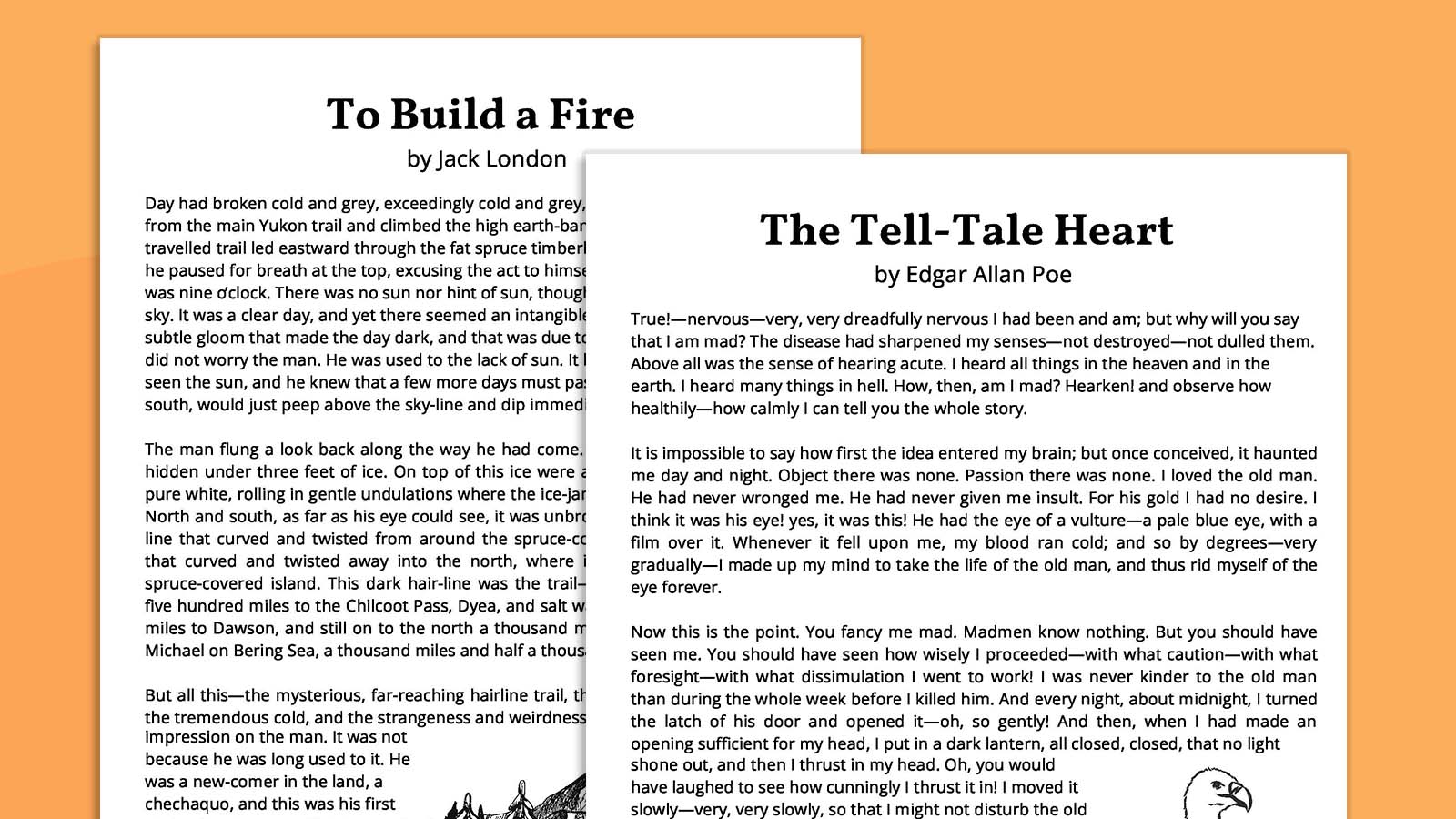
“If still you think me mad, you will think so no longer when I describe the wise precautions I took for the concealment of the body. The night waned, and I worked hastily, but in silence. First of all I dismembered the corpse. I cut off the head and the arms and the legs.”
Why we love it: This is a ghost story with an unreliable narrator, terrifying action, and (spoiler alert) no ghost. it’s a great start or end to a unit on short stories.
62. The Hitchhiker by Lucille Fletcher
Why we love it: This is a short story in script form that’s fun to perform in class. Also, you can pair this with the Twilight Zone version to analyze craft and perspective.
63. The Landlady by Roald Dahl
“He walked briskly down the street. He was trying to do everything briskly these days. Briskness, he had decided, was the one common characteristic of all successful businessmen.”
Why we love it: When the narrator, Billy, arrives in Bath, and it becomes problematic when he meets the landlady, even Billy seems to understand his predicament. I get the chills just thinking about this story. Students love that too.
64. The Smallest Dragonboy by Anne McCaffrey
“Dragonriders, even if they were still only hopeful candidates for the glowing eggs which were hardening on the hot sands of the Hatching Ground cavern, were expected to be punctual and prepared.”
Why we love it: It’s simply a beautiful story with science-fiction and fantasy motifs.
65. The Scarlet Ibis by James Hurst
“It was I who renamed him. When he crawled, he crawled backwards, as if he were in reverse and couldn’t change gears. If you called him, he’d turn around as if he were going in the other direction, then he’d back right up to you to be picked up. Crawling backward made him look like a doodlebug, so I began to call him Doodle.”
Why we love it: It’s one of those short stories for middle schoolers that’s straight-up heartbreaking, so be prepared for that, but it’s also rich with symbolism and character development.
66. My First Free Summer by Julia Alvarez
“I never had summer—I had summer school. First grade, summer school. Second grade, summer school. Thirdgradesummerschoolfourthgradesummerschool. In fifth grade, I vowed I would get interested in fractions, the presidents of the United States, Mesopotamia; I would learn my English.”
Why we love it: It’s Julia Alvarez, which means the kids will be so wrapped up in the story they won’t realize they’re reading. In fact, they’re just experiencing her engaging point of view.
67. The Lottery by Shirley Jackson
“The lottery was conducted—as were the square dances, the teen club, the Halloween program—by Mr. Summers, who had time and energy to devote to civic activities. He was a round-faced, jovial man and he ran the coal business, and people were sorry for him because he had no children and his wife was a scold.”
Why we love it: No short story list would be complete without “The Lottery.” It’s a wonderful story with interesting plot twists that forces students to pay attention and give it a close read.
68. The Gift of the Magi by O. Henry
Why we love it: It’s a classic story about a couple who give up their greatest treasures to buy gifts for each other. Students can discuss the themes of sacrifice and love and rewrite the story with their own updates.
69. The Gold Cadillac by Mildred Taylor
“‘We got us a Cadillac! We got us a Cadillac!’ Wilma and I proclaimed in unison.”
Why we love it: The story, and the idea of cars as a status symbol, is timeless.
70. Fish Cheeks by Amy Tan
“When I found out that my parents had invited the minister’s family over for Christmas Eve dinner, I cried. What would Robert think of our shabby Chinese Christmas? What would he think of our noisy Chinese relatives who lacked proper American manners?”
Why we love it: Use this story to analyze how the author develops a narrator’s point of view.
71. The Most Dangerous Game by Richard Connell
“An abrupt sound startled him. Off to the right he heard it, and his ears, expert in such matters, could not be mistaken. Again he heard the sound, and again. Somewhere, off in the blackness, someone had fired a gun three times.”
Why we love it: This story builds suspense and tension and provides space for students to discuss whether this story is meant to be read literally or allegorically.
72. Sol Painting, Inc. by Meg Medina
“Papi and I have a long-term business plan. I’m going to take over his company one day and turn it into an empire. Home Depot will eat my dust. I’ve already designed my business cards. They’ve got a sun rising and fancy gold letters: MERCI SUAREZ, CEO, SOL PAINTING, INC.”
Why we love it: Medina’s writing appeals to many students who have trouble connecting with content, starting with the narrator’s compelling voice.
73. Main Street by Jacqueline Woodson
Why we love it: This is a story about grief and loss, with a main character who recently lost her mother to cancer. Despite the sober premise, it’s a wonderful story to use for close reading.
74. Raymond’s Run by Toni Cade Bambara
“I don’t have much work to do around the house like some girls. My mother does that. And I don’t have to earn my pocket money by hustling; George runs errands for the big boys and sells Christmas cards. And anything else that’s got to get done, my father does. All I have to do in life is mind my brother Raymond, which is enough.”
Why we love it: Middle school students know what it means to stand by your family, and this story leads to great conversations about theme.
75. The Ones Who Walk Away From Omelas by Ursula Le Guin
“Do you believe? Do you accept the festival, the city, the joy? No? Then let me describe one more thing.”
Why we love it: It’s more of a proposition than a story. As a result, students can explore meaning and consider the ethical questions Le Guin raises.
76. What’s the Worst That Could Happen? by Bruce Coville
“If thirteen is supposed to be an unlucky number, what does it mean that we are forced to go through an entire year with that as our age? I mean, you would think a civilized society could just come up with a way for us to skip it.”
Why we love it: This story explores what it’s like to be 13, and whether your middle schoolers are heading into 13 or coming out of it, they will love reading one perspective on the awkward teen years.
77. The Monkey’s Paw by William Wymark Jacobs
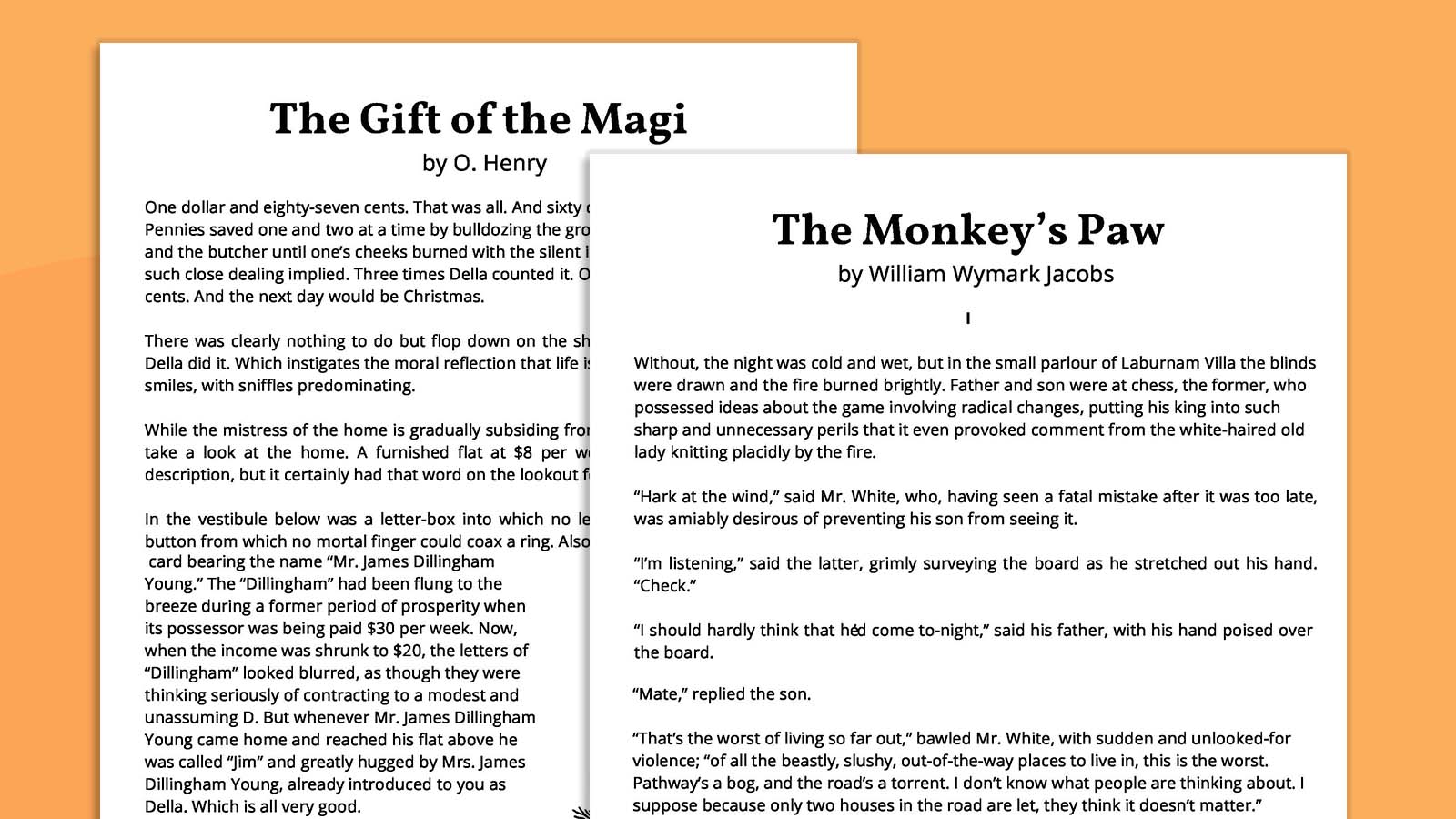
Why we love it: The story is written in a dialogue-driven way and the plot builds to an important lesson.
78. The Boo Hag by Veronica Byrd
“But Emmet had his eyes set on a beautifully mysterious young woman who lived alone in a small cabin deep in the marsh. She was incredibly beautiful, with long dark hair, smooth skin and piercing green eyes. But word around town was that she was a little strange, and it was best to stay away from her.”
Why we love it: This story connects with the tradition of oral storytelling. Read it aloud to students or assign them the challenge of making this story come to life through read-aloud.
Get my free printable short stories!
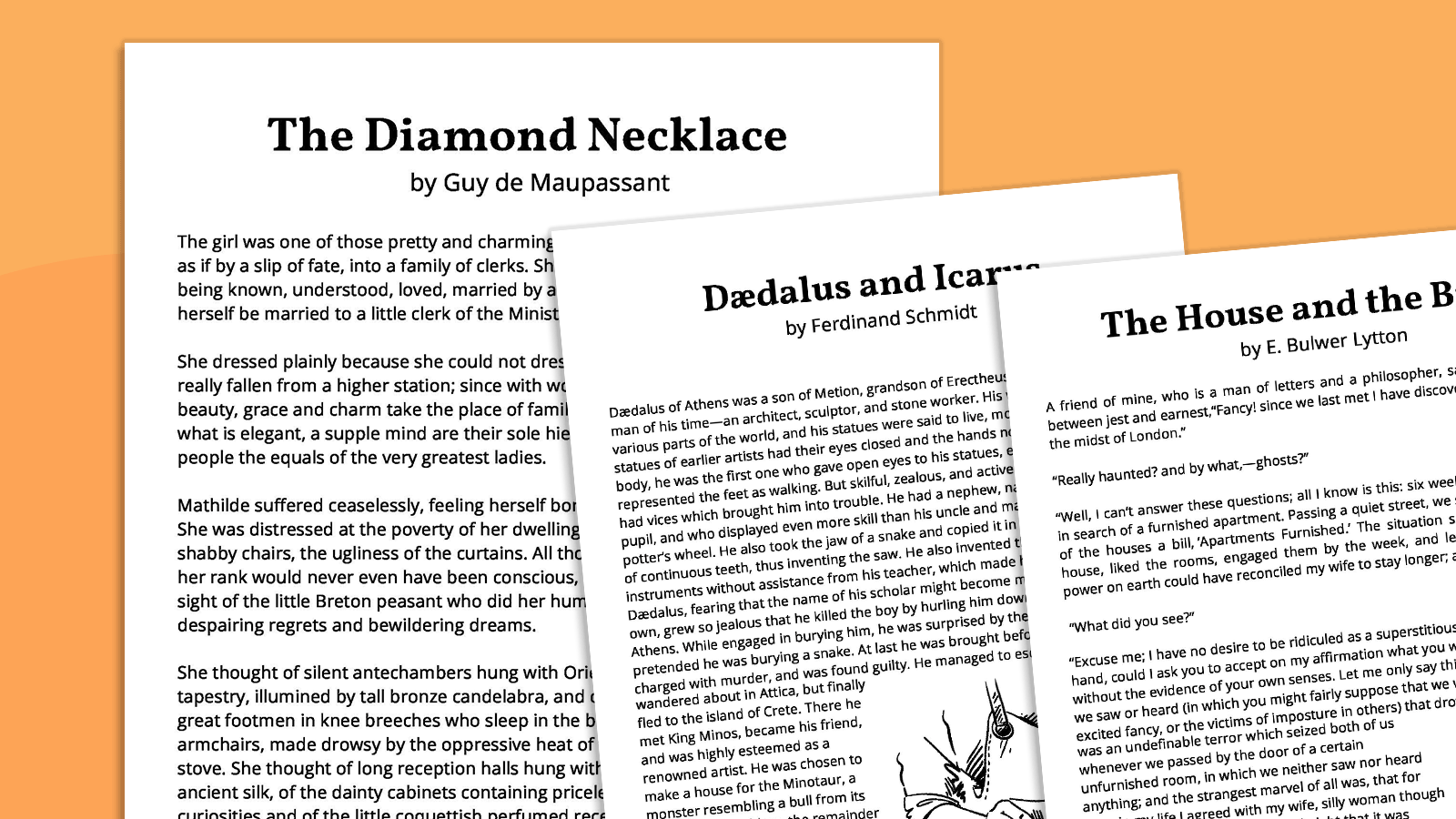
Just click the button below and fill out the form to get printable copies of many of the stories listed above.

